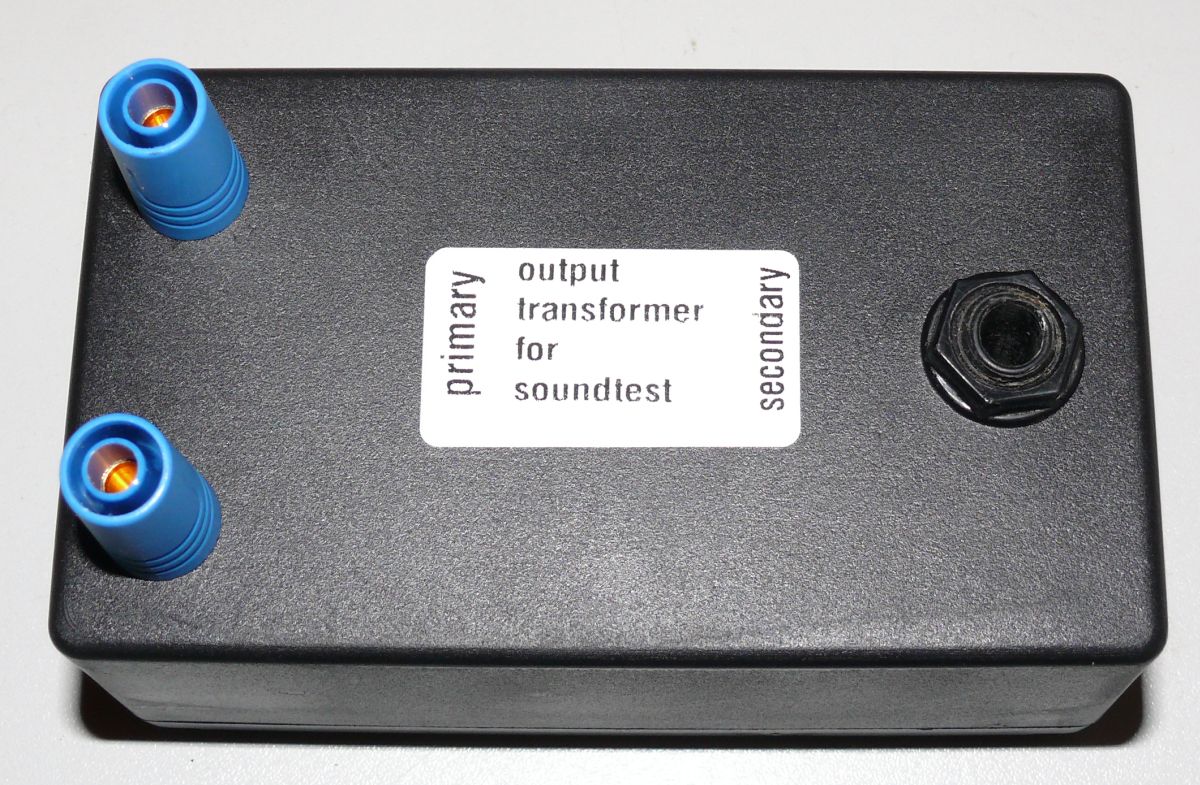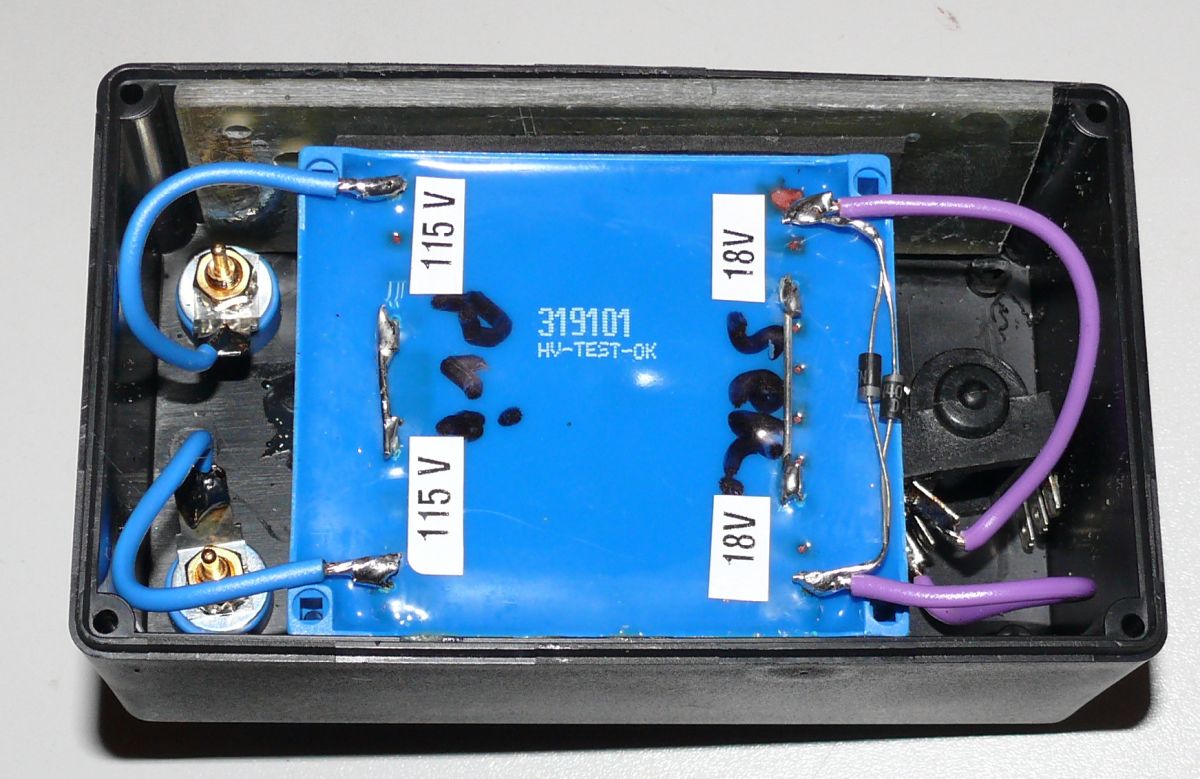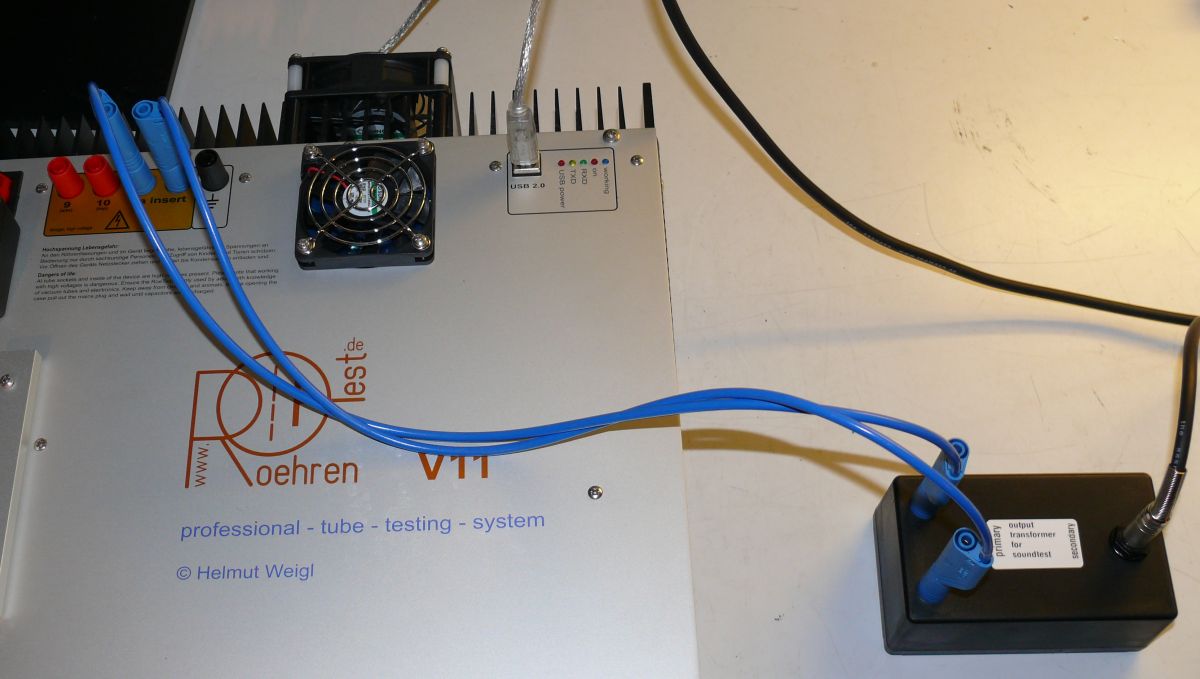 |
 |
Mikrofonie
ist eine negative Eigenschaft von Röhren. Röhren sind mechanische
Gebilde aus Drähten, Blechen und anderen Teilen. Erschüttert man Röhren
oder treffen Schallwellen auf die Röhre, geraden die mechanischen Teile
in Schwingungen, was sich wiederum in elektrische Schwingungen
überträgt. Dem Ausgangssignal werden unerwünschte Geräusche (klirren,
pfeifen, ploppen) hinzugefügt. Das gilt für alle Röhren. Dabei
hängt es sehr stark vom Aufbau der Röhre ab, ob
eine Röhre besonders mikrofonieempfindlich ist. Für kritische
Schaltungspunkten hochwertiger Geräte (z.B. hochempfindlichen
Mikrofoneingänge) werden deshalb speziell mikrofoniearme Typen
ausgewählt. Besonders bemerkbar macht sich Mikrofonie in
Eingangsstufen, bei welchen das Signal durch weitere Stufen noch hoch
verstärkt wird.
Daneben kann eine Röhre noch andere Geräusche verursachen:
- Rauschen
- Krachen
- Prasseln
Selbst
bei gleichem Typ kann es negative Ausreisser geben. Dies kann an
Fertigungstoleranzen oder defekten der Röhre liegen. Der
Mikrofonietest dient dazu diese negativen Ausreißer zu erkennen.
Wie kann man prüfen, ob eine Röhre mikrofonieempfindlich
ist, übermäßig rauscht, kracht, etc.? Das
ist relativ einfach. Man benötigt nur eine einfache
Schaltung,
mit welcher die Röhre mit allen erforderlichen Spannungen versorgt
wird. In die Anodenleitung wird ein Ausgangsübertrager
eingeschleift.
An die niederohmige Seite des Ausgangsübertrager wird ein
Vorverstärker
mit Endstufe und Lautsprecher angeschlossen:
|
Microphonics
is a negative property of tubes. Tubes are mechanical
structures formed from wires, metal sheets and other parts. When a tube
is shaken or when sound waves hit the tube the mechanical parts begin
to vibrate. These vibrations lead to electrical fluctuations. Unwanted
noises are added to the output signal (distortion, whistling, plopps).
This applies to all types of tubes. The tube's construction is the main
cause for its sensivity to microphonics. For critical circuits in
high-grade devices (e.g. highly sensitive microphone amplifiers)
specific tubes with low microphonics are used. Microphonics is
specifically noticeable in input stages when the signal is highly
amplified in the following stages.
A tube can also cause other noises:
- Noise
- Cracking
Even with tubes of the same type there can be negative exceptions.
This may be due to production tolerances or tube defects. The
microphonic test serves to recognize those negative exceptions.
How can you check if a tube is susceptible to microphonics is noise or
crackling? This is quite simple. You only need a simple circuit that
supplies all required
voltages for the tube. Then a transformer is inserted in the anode
line. At the low impedance side of the transformer an amplifier with
output stage and loudspeaker is attached:
|
 |
Da hier keine HiFi-Ansprüche an den Übertrager gestellt und auch keine
Leistungen übertragen werden, kann man auch einen Netztrafo als
Übertrager verwenden. Der Übertrager sollte in ein Gehäuse eingebaut
werden (Berührungsschutz).
Vorsicht: Über die Primärwicklung des
Übertragers fließt die volle Anodenspannung. Verzichten Sie aus
Sicherheitsgründen deshalb auf unbekannte alte Übetrager (z.B. aus
Radios), deren Isolationseigenschaften Sie nicht kennen.
|
As we do not
require Hifi-Standards for the transformer and there is
also only little power to handle a mains transformer can be used here.
The transformer should be mounted in a housing (for touch protection).
Caution: At the primary winding of the transformer there is the full
anode voltage. So for safety reasons do not use old, unknown
transformer types (e.g. from radios) where the insulation properties
are unknown. |
 |
 |
Man kann einen Übertrager in ein Gehäuse einbauen und dann einen vorhandenen Verstärker verwenden.
siehe output_transformer_for_soundtest.pdf
Man kann aber auch Übertrager und Gehäuse in ein gemeinsames Gehäuse einbauen.
siehe Verstaerker RoeTest.html
|
You can install a transformer in a housing and then use an existing amplifier.
see output_transformer_for_soundtest.pdf
You can also install the transformer and housing in a common housing.
see Verstaerker RoeTest.html |
|
Das RoeTest bringt idealerweise alle Voraussetzungen mit. Alle benötigten Spannungen werden als Gleichspannungen
zur Verfügung gestellt und alle Spannungen lassen sich auf die
gewünschen Arbeitspunkte einstellen. Das RoeTest ist quasi die
"Schaltung" in welcher die Röhre für den Soundtest
betrieben wird. |
The RoeTest ideally brings along all needed requirements. All
required voltages are provided as DC voltages and all voltages
can be adjusted for the desired operating point. The RoeTest is
effectively the "circuit" for the tube's soundtest. |
So wird der Ausgangsübertrager an das RoeTest angeschlossen
(ab RoeTest >= V10):
|
This is how the output transformer is connected to the RoeTest
(from RoeTest >= V10): |
 |
ab RoeTest >= V10 wird der Soundtest auch durch Software unterstützt
siehe Soundtest_D_EN.pdf
|
from RoeTest >= V10 the sound test is also supported by software
see Soundtest_D_EN.pdf |
Ältere RoeTests (<=V9)
Bei älteren Geräten gibt es noch keine automatische
Umschaltung. Ein Übertrager kann nur manuell in die Anodenleitung
eingeschleift werden. Auch durch die Software werden ältere
Geräte nicht unterstützt.
Nachstehend ein Bild vom Messaufbau. Die REN904 hat
die Anode an Stift 1. Diese Verbindung wird mittels der Insertbox
getrennt (Kurzschlussstecker gezogen) und mit dem Übertrager verbunden.
Die Sekundärseite des Übertrages ist mit dem Eingang eines
Audioverstärkers verbunden (hier können Sie nehmen, was
gerade verfügbar ist; Stereoanlage, PC-Aktivlautsprecher ...).
|
Older RoeTests (<=V9)
Older devices do not have automatic switching. A transformer can only
be manually looped into the anode line. Older devices are also not
supported by the software.
In the following a picture of the measurement setup. The REN904's
anode is at pin 1. This connection is disconnected on the insert box
(shorting plug removed) and connected to the transformer.
The transformer's secondary winding is connected to the input of an
audio amplifier (you can use whatever is available; stereo system,
PC-active speaker ...). |
 |
Im manuellen Modus werden alle benötigten Spannungen zur Verfügung gestellt.
|
Manual
mode is used to supply all required voltages. |
Nachdem die Röhre aufgeheizt ist, beklopft man diese und man hört das Ergebnis im Lautsprecher.
Hier zwei Videos einer schlechten und einer guten Röhre (REN904):
Video: mikrofonische REN904

Video: gute REN904

Der Verstärker war bei beiden Röhren gleich eingestellt.
Schließt man ein Oszilloskop am Übertragerausgang an, kann man das Ergebnis sogar sichtbar machen:
Video: mikrofonische REN904

Video: gute REN904

Mit dem Akustiktest kann man nebenbei andere Fehler,
wie Zischen, starkes Brummen, übermäßiges Rauschen entdecken.
Beide
Röhren haben etwa 100% Emission. Die schlechte REN904 war in einem
VE301 nicht brauchbar. Dies zeigt, dass eine rein messtechnische
Prüfung der Röhre Mikrofonieprobleme nicht entdecken kann.
Der Akustiktest stellt deshalb eine sinnvolle Ergänzung zu den modernen
computergesteuerten Messungen des RoeTest dar.
Noch ein Hinweis:
Der
Trafo darf nur für den Akustiktest in die Anodenleitung geschaltet
sein. Bei normaler Röhrenmessung würde dieser das Messergebnis
verfälschen (der Trafo wäre ein unerwünschter Widerstand in der
Anodenleitung). Ab RoeTest V10 erfolgt die Umschaltung automatisch. |
After heating-up the tube knock on the tube and listen to the
result from the loudspeaker.
Here are two videos of a bad and a good tube (REN904):
< videos see left
microphonic type
not microphonic type
The amplifier
was set to same conditions for both tubes.
When an oscilloscope is connected to the transformer's output
the result can also be viewed:
< videos see left
microphonic type
not microphonic type
With the
acoustic test you can also detect other faults like hiss,
heavy humming, excessive noise.
Both tubes have approximately 100% emission. The bad REN904
was not useable in a VE301. This shows that microphonic problems
cannot be detected by merely static measurements.
The acoustic test is therefore a reasonable supplement for the
modern computer controlled measurements of the RoeTest.
One more note:
The transformer should only be inserted in the anode line for the
acoustic test. When inserted during the standard static tube
measurements it would corrupt the measuring results (the transformer is
an unwanted additional resistor in the anode line). From RoeTest V10 up
the switching is made by software.
|
|
|
 RoeTest (Röhrentest)
RoeTest (Röhrentest) RoeTest (Röhrentest)
RoeTest (Röhrentest)
























